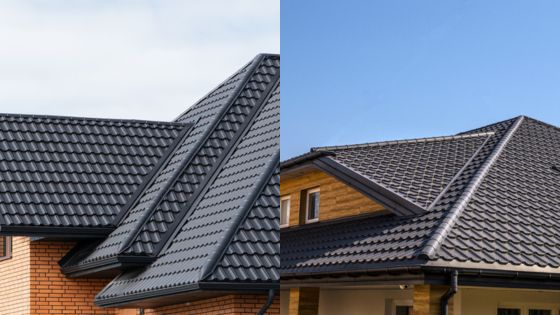
“Accidents happen.” That’s what we always hear, right? “That’s just life.” is another popular one.
If the accident in question is spilling a bowl of soup or tripping over a cord, then that really is just life. It happens to everyone. But if the accident happens on a larger scale, like a bridge collapsing or a structure failing, then it’s no longer an accident, it’s an absolute disaster.
When a disaster happens, nobody can look at the bright side, because – is there a bright side to a bridge collapsing and killing hundreds of people? No. At that moment, there’s no silver lining. It’s a tragedy. However, in the long term, each and every disaster forces experts to rethink their strategies and come up with an innovation that will make sure the incident doesn’t happen again.
Urban disasters expose weaknesses in the systems we trust, but over time, they also lead to adopting stricter building codes, advancements, and more focus on creating something that will protect as much as it will inspire.
How 6 Disasters Shaped Architecture
You’re walking down the road, trip over an old concrete slab sticking out, break a leg, and then contact a reputable law firm to get compensated. Easy-peasy, right?
But what about the aftermath of a major disaster? If you’re the injured party, of course, get a lawyer then, too, but what do we do to prevent it from happening again?
Here’s what we learned from the past.
- The Hyatt Regency Walkway Collapse (1981)
The Hyatt Regency walkway collapse happened in 1981 in Kansas City and it’s one of the deadliest structure failures in the history of the U.S.
During a public dance event, the suspended walkways in the hotel atrium failed, killing 114 people and injuring over 200 more. After an investigation, it was revealed that a modification that was made in the design had doubled the stress on critical load-bearing components, and that change wasn’t properly checked.
As tragic as this event was, we learned just how important it is to thoroughly review all design processes, conduct rigorous load-bearing tests, and that it’s imperative for the engineers and contractors to communicate all they’re doing. This event resulted in many reforms in construction oversight.
- The Tacoma Narrows Bridge Collapse (1940)
The Tacoma Narrows Bridge, which was known as “Galloping Gertie,” became infamous because of how dramatically it collapsed just 4 months after it was opened. Strong winds caused oscillations in the bridge and, eventually, they tore it apart.
Later, engineers found out that the design didn’t account for aerodynamic forces, which was a key oversight at the time. This disaster was a turning point in structural engineering and it resulted in incorporating wind tunnel testing in all bridge design and the study of aeroelasticity.
Now, modern suspension bridges aren’t built the same as they were back in 1940 and this disaster is what sparked the change.
- Grenfell Tower Fire (2017)
The Grenfell Tower fire happened in London and it showed how important fire safety is in high-rise buildings. The flames completely engulfed the tower, which resulted in 72 people losing their lives. The flames were fueled by a highly flammable cladding, which was installed during a renovation. In addition to stricter regulations on building exteriors, incorporating fire retardant hotel curtains as window treatments can help minimize fire spread within interior spaces, offering passive protection in hospitality and residential buildings.
Apart from this, investigators also found a lack of fire-resistant materials and inadequate protocols for evacuation. This fire drew attention to severe gaps in fire safety regulations and led to changes being made in building codes. This included bans on combustible cladding materials and introducing stricter requirements for fire inspections.
- The Station Nightclub Fire (2003)
In Rhode Island’s The Station, what should have been a fun concert turned into a deadly fire when pyrotechnics ignited flammable soundproofing materials. The fire spread in an instant; it killed 100 people and injured over 200.
After an investigation, it was found that the space was overcrowded, there wasn’t enough fireproofing, and the exits were poorly marked. After this tragedy, stricter fire safety codes were enforced for public venues, which now needed exits being marked clearly, better crowd control, and the use of fire-resistant materials.
- The Triangle Shirtwaist Factory Fire (1911)
Although this incident happened well over 100 years ago, it’s still one of the biggest workplace disasters in history.
In 1911, a fire broke out in New York City’s Triangle Shirtwaist factory and killed 146 workers, most of which were young women. Locked doors, no fire escapes, and inadequate emergency planning made it pretty much impossible for workers to escape.
After this, a wave of reforms in workplace safety was introduced; modern fire codes, mandatory sprinklers in buildings with high occupancy, and labor laws that protected the workers.
- The Iroquois Theatre Fire (1903)
This was one of the deadliest single-building fires in U.S. history. 602 people died during that fire. The tragedy occurred after a faulty stage light sparked causing a fire. The fire spread extremely quickly because of the highly flammable stage curtains and scenery. And since the theater lacked emergency exit protocols (few emergency exits, some were locked, and they were poorly marked) which would be mandated today, many people ended up being trapped.
As you can imagine, this disaster led to significant reforms in fire safety regulations.
If you ever find yourself in any type of accident, whether it’s in another fire disaster like the one in Chicago, or a bridge collapse, like the one back in Tacoma – it doesn’t really matter where or what type of disaster it is – always consult a highly reputable law firm such as Rosenfeld Injury Lawyers to seek help, advice, and check if there’s a possibility of some sort of compensation for you.
Conclusion
Remember, after rain comes sunshine. Nobody can argue with the fact that these incidents were tragic, but the aftermath led to some very positive changes being made. Today, we know better and our architecture isn’t just beautiful to look at – it’s safer for generations to come.
- 0shares
- Facebook0
- Pinterest0
- Twitter0



